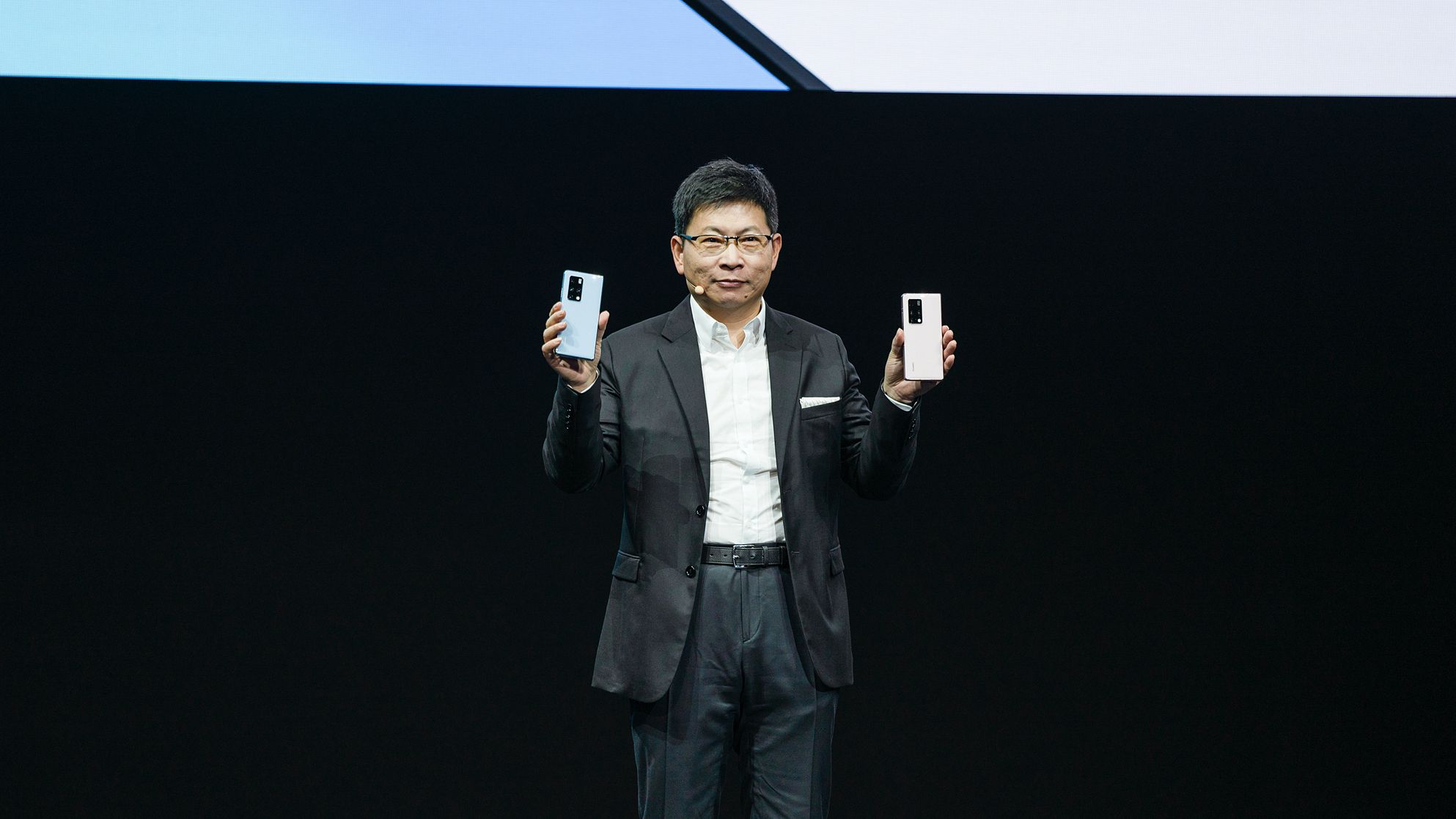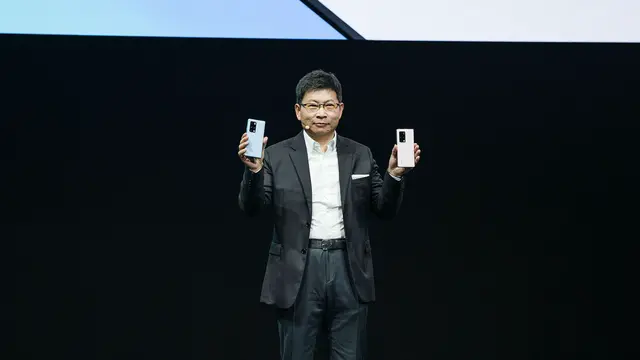
Richard Yu, head of Huawei's consumer business group displays Huawei's new foldable phone
Huawei has unveiled its new flagship foldable smartphone, Mate X2, on Monday, nearly a year after the U.S. blocked the chipset supply to the company last year.
It's the third foldable smartphone from Huawei; the company had earlier released Mate X and Mate Xs. It's also the first major smartphone after the company rolled out the budget smartphone Honor.
The new phone continues to adopt Huawei's own Kirin 9000 processor, the chip used in its Mate 40 Pro last year. The phone features two screens – a bigger screen measures eight inches on the inside and a 6.45-inch OLED screen on the outside serving as a regular phone when it folds. Both screens are slightly bigger than the 7.6-inch internal display and 6.2-inch external displays found on Samsung's Galaxy Z Fold 2.
It's embedded a 4,500 mAh battery that can be fast-charged at up to 55W. The handset costs RMB 17,999($2,785) for 256G version and RMB 18,999 for 512G. The phone has four colors available, including white, black, blue and pink. The official sale will start on February 25 nationwide. No international sale plan has been mentioned at the event.
The company also shared its latest operating system, Harmony OS, which will be available for its phones starting this April. Mate X2 will be the first among them.
So far, 95 percent of the top 1,000 applications from popular stock apps to maps in the app store have been adapted to the new screen, according to the company.
Richard Yu, head of Huawei's consumer business group, said Huawei's foldable phone will not lose its flagship performance, "Huawei won't stop its efforts on developing and innovating fordable phones. We will have more diverse fordable phone for our customers."
Compared to Huawei's previous fordable handsets in which the display screen folds like a book cover, the company's new big design change on the screen shows better protection for the screen, resembling Samsung's Galaxy Fold and Galaxy Z Fold 2. The new screen can still hold a strong performance without creating any crease after repeated folding – which is a common problem seen among foldable phones.
Foldable phones are growing to attract innovation interest from the phone makers. Except for Samsung, Apple also has begun early work on foldable screens, a potential strong rival to others, Bloomberg reports. Foldable phone as cool as it sounds – it works like a regular phone while providing a big screen for multitasking, entertainment and work.
Once the world's largest smartphone maker by shipment, a series of restrictions imposed by Washington for over a year hit the company's overseas business. The U.S. government forbids the Chinese tech giant's global suppliers from selling key components essential to assemble top-tier smartphones. The blacklisting also barred Huawei from receiving the latest Android operating system developed by Google, limiting the device's viability outside of China.
Huawei's worldwide smartphone shipment slumped over 42 percent year-on-year in the last quarter of 2020, while its key competitors, including Apple, Samsung and Xiaomi, all gained market share, according to the research firmIDC.
In China, Huawei's handset business faces growing challenges from local rivals such as Oppo and Vivo. The Shenzhen-based company sold its budget phone brand Honor to a Chinese consortium, hoping the spin-off could help the unit free of U.S. sanction. Honor's executivesaidin January that the newly formed company had resumed business ties with key suppliers.
Keeping the smartphone business alive carries significant meaning for Huawei because more than half of its revenue came from the consumer electronics unit, in which smartphone sales were the main contributor, according to Huawei's latest annualreport.
 简体中文
简体中文

